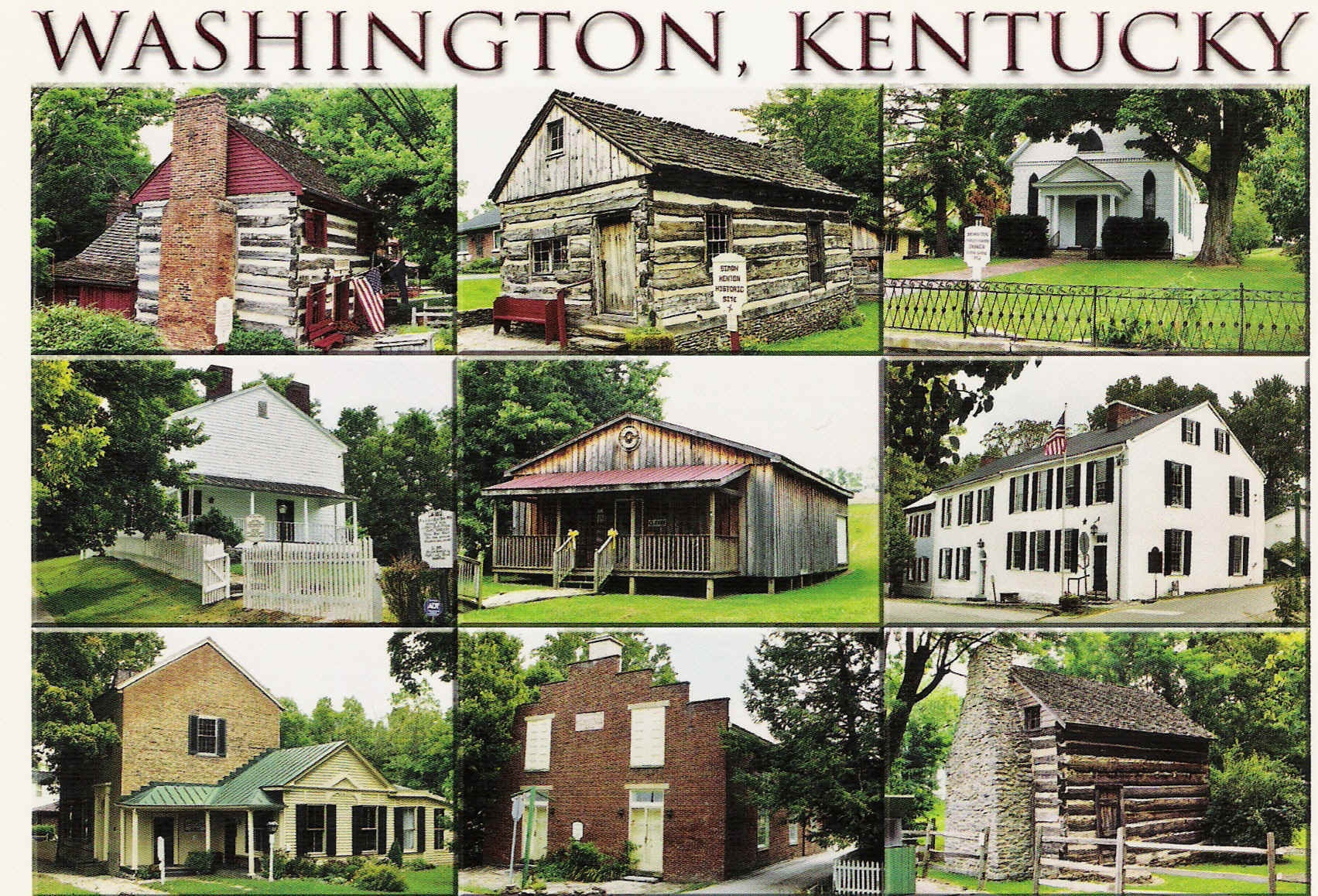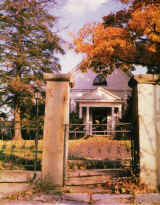
Click on picture to enlarge
Historic Washington, KY
9 MUSEUM'S
Left to Right: Top Row
1. The Cane Brake - Bluegrass Artsian Center, Mike Cowden, Director - One of the original 119 log cabins pre 1790. Local Artists including
Mike Cowden, Ken Swinson, Rob Weingartner, Silversmith, Sue Ellen Gorman, Painter, Megann Thomas, Sculptor, Jennifer Gleason with Sunflower
Sundries.
2. Simon Kenton Shrine - One of the original 119 log cabins. This museum honors the famous explorer who settled the area and spent 14 years of his life here. Example of a Frontier General Store such as Simon had at one time. When he left the area because it had become too tame he left his brother, John to run it and John failed to collect those who owed, thus the
business ended.
3. Presbyterian Church, 1870 - Gothic Revival structure, sanctuary of pressed tin coverings on wall and ceiling. The cornerstone from the former church, built in 1844, was incorporated into the foundation.
The cornerstone from the former church, built in 1844, was incorporated into the foundation.
Presbyterian Church 1870 in Autumn
Left to Right - Center Row
4. The Albert Sidney Johnston House, C 1797, the 1803 birthplace and childhood home of this famous Confederate general. His death at Shiloh on April 6, 1862, is said to have been the military turning point of the Civil War.
Center building was Carriage Museum - No longer open.
5. Paxton House - Now houses the Visitor's Center offering Frontier Village, Covered Bridge, Underground Railroad, Log Cabin Learning Tours with costumed guides. Phone: 606-759-7411.
6. Paxton Inn - Since before 1810, built by prominent Washington lawyer and abolitionist, James a. Paxton, it was the favorite meeting place for lawyers and citizens to discuss politics and other key issues of the day. Mr. Paxton, his wife and four children lived next door in the Paxton House. It was a station on the Underground Railroad with a hidden stairway between the first and second floor where runaway slaves were hidden until they could be safely transported across the Ohio River under the cover of darkness when owned by Mr. Paxton. By 1838, Willis Lee had taken over the successful tavern near the Courthouse. This museum is on the Underground Railroad Tours.
Left to Right - Bottom Row
7. Harriet Beecher Stowe - Slavery to Freedom Museum - 1807 - The Colonel married Harriet Sellman in 1816, and here they raised six children. In the summer of 1833 Harriet Beecher Stowe visited the Marshall Key Home, as a guest of their daughter, Elizabeth, who was one of her students at the Western Female Institute in Cincinnati. While she was here she visited a slave auction on the Courthouse lawn and from this experience later wrote "Uncle Tom's Cabin." Today this is a museum on the Underground Railroad Tours. Phone 606-759-4860
8. Old Church Museum 1848 - The Methodist Episcopal Church South - This was the second church used by the congregation first formed in 1786. Prior to the Civil War, strong sentiments split the Methodists into M. E. Church North and M. E. Church South.
9.Mefford's Station - C 1787 was built using planks from the flatboat that carried his family down the Ohio River from Pittsburgh. It is the only known flatboat house still in existence built in part from a flatboat. Mr. & Mrs. Mefford and their 13 children lived in this log cabin after they settled here from Pittsburgh. Candles are dipped here during Frontier Christmas each year.